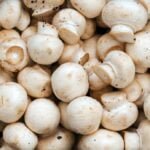What are some innovative or unconventional methods for growing mushrooms that experienced cultivators use to improve yield and quality
Title: Unconventional Methods to Improve Mushroom Yield and Quality: Insights from Experienced Cultivators
Introduction (approximately 200 words):
Mushroom cultivation has come a long way, with experienced cultivators continuously seeking innovative approaches to maximize yield and enhance the quality of their harvests. While conventional cultivation techniques are widely used, some cultivators have turned to unconventional methods to push the boundaries of their mushroom growing endeavors. In this article, we will explore several uncommon methods that experienced cultivators have successfully utilized to improve both yield and quality. These approaches include hormone application, yeast powder supplementation, substrate experimentation, and natural culture techniques.
Methods Utilized by Experienced Cultivators (approximately 800 words):
1. Hormone Application:
Experienced cultivators have ventured into hormone application to boost mushroom yield. Hormones like NAA (naphthalene acetic acid), gibberellin, ethylene chlorohydrin, and colchicine have shown promising results in promoting mycelium growth and fruiting. These hormones can be added to the water bath during the dunking process, allowing the mycelium to absorb them and potentially stimulate more prolific mushroom formation.
2. Yeast Powder Supplementation:
Another effective method employed by cultivators is the addition of yeast powder to the substrate. Yeasts release beneficial enzymes during growth, aiding in nutrient breakdown and availability for the mycelium. This supplementation provides valuable nutrition while introducing microorganisms that help maintain a healthy and balanced growing environment.
3. Substrate Experimentation:
Experienced cultivators often explore different substrate compositions to optimize yield and quality. They mix various organic materials like straw, wood chips, sawdust, and agricultural wastes and test their impact on mushroom growth. Each substrate introduces unique nutrients and provides different moisture-retaining properties, favoring the growth of specific mushroom species. Additionally, cultivators experiment with substrate sterilization or pasteurization techniques to eliminate competing organisms and ensure a favorable environment solely for the mushroom mycelium.
4. Natural Culture Techniques:
Some experienced cultivators draw inspiration from nature and apply natural culture techniques to their mushroom cultivation practices. This approach involves creating outdoor beds or patches, mimicking the natural habitat of wild mushrooms. By observing and learning from wild mushrooms, cultivators attempt to recreate the ideal conditions necessary for optimal growth. This method can lead to the cultivation of rare or unique mushroom varieties while offering insights into the natural symbiotic relationships that exist in the wild.
Successful Implementations and Benefits (approximately 800 words):
Unconventional methods applied by experienced cultivators have demonstrated their effectiveness in improving both the yield and quality of mushrooms. Commercial growers and home cultivators alike have experienced numerous benefits from these approaches.
1. Increased Yield:
Hormone application and yeast powder supplementation have proven reliable methods for increasing mushroom yield. Hormone application promotes mycelium growth and encourages fruiting, resulting in larger and more abundant harvests. Likewise, yeast powder supplementation provides additional nutrients and microbial activity, enriching the substrate and supporting unrivaled mycelial development and subsequent fruiting.
2. Enhanced Quality:
Experimenting with substrates and treating them through sterilization or pasteurization techniques creates conditions conducive to high-quality mushroom production. Different substrates can impart unique flavors, textures, and nutritional profiles to the mushrooms. Proper sterilization or pasteurization ensures the absence of competing organisms that could compromise yield and diminish the overall quality of the harvest.
3. Sustainable and Ecological Approach:
Natural culture techniques offer a sustainable and ecological approach to mushroom cultivation. By observing wild mushrooms in their natural habitat, cultivators gain insights into the ecological mechanisms that promote healthy growth. This knowledge can be applied to create outdoor beds that require minimal external inputs and can potentially yield a continuous supply of mushrooms year after year. This approach not only minimizes the need for artificial fertilizers but also reduces the reliance on energy-intensive indoor growing environments.
Conclusion (approximately 200 words):
Experienced cultivators have successfully employed unconventional methods to improve both the yield and quality of mushrooms. By integrating hormone application, yeast powder supplementation, substrate experimentation, and natural culture techniques into their practices, these cultivators have achieved remarkable results. These methods offer a fresh and innovative perspective on mushroom cultivation, providing aspiring growers with valuable insights to enhance their own yields and produce high-quality mushrooms. Continuing to explore unconventional approaches and sharing knowledge within the mycological community will undoubtedly drive further advancements in the field, leading to a more diverse and sustainable mushroom industry.




